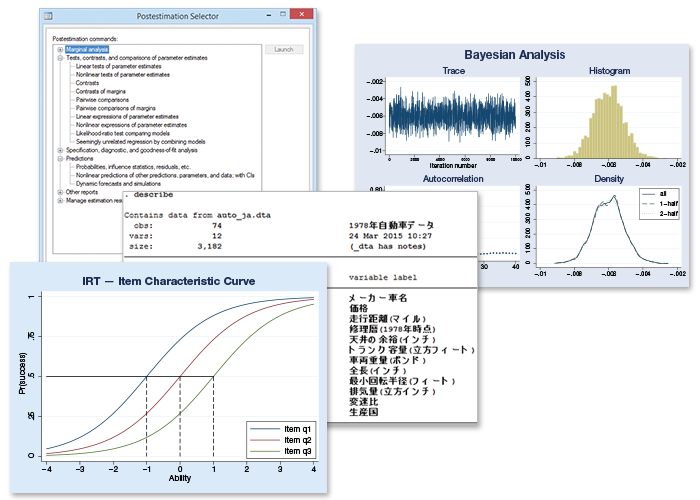
Stata 14 is available now. Upgrade now. Download now. Run it now.
Stata 14 is possibly our biggest release ever; it is certainly our broadest.
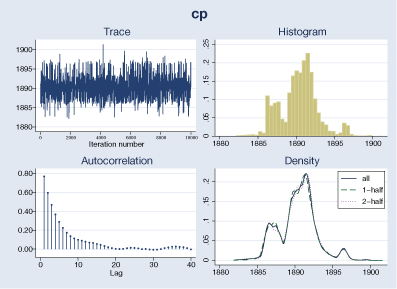
Bayesian analysisBayesian analysis is a statistical analysis that answers research questions about unknown parameters using probability statements. For example, what is the probability that the average male height is between 70 and 80 inches or that the average female height is between 60 and 70 inches? Or, what is the probablility that ... |
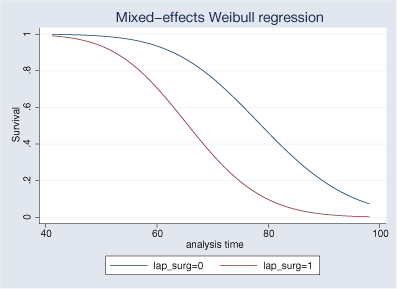
Multilevel survival modelsDo you have survival or duration data with multilevel groupings? Time in hospital for patients within doctors within hospitals? Time to complete a skills test for students within schools within school districts? Fit these models in Stata 14 using parametric methods, and including random intercepts, random coefficients, nested and crossed effects, and more ... |
Endogenous treatment effects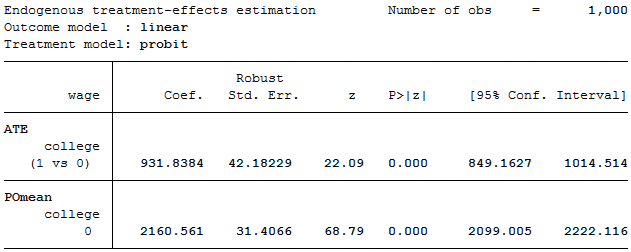
Treatment-effects estimators extract experimental-style causal effects from observational data. New in Stata 14 is dealing with endogeneity, which is to say, when the same unobserved variable(s) affected both treatment and outcome ... |
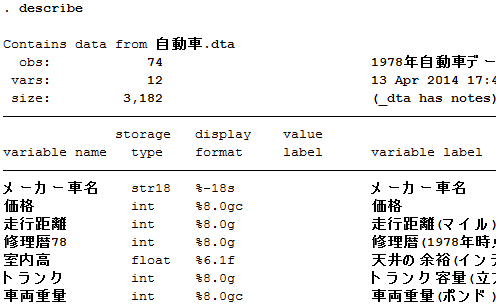
UnicodeDo you see the output from describe? That's auto.dta in case you couldn't tell. You'd be excused for not knowing because it's in Japanese. All of which is our way of saying that Stata now supports Unicode, and it supports it everywhere ... |
Panel-data survival models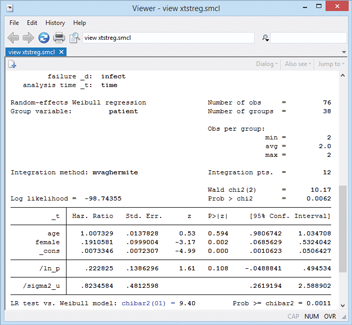
Stata fits survival models. In survival models relevant here, survival time is modeled using a parametric distribution, and right-censoring is allowed. Stata fits panel-data models. In panel-data models relevant here, the data occur in groups of observations that share something in common that is modeled as unobserved random effects. In Stata 14, we put the two models together.... |
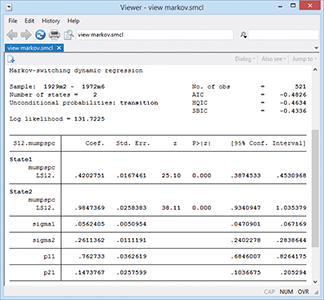
Markov-switching modelsMarkov switching is about time-series models in which the parameters change over time between regimes, and the switching is either abrupt or smooth ... |
Survey for multilevel modelsStata 14 now provides survey-adjusted point estimates, standard errors, and tests for multilevel models. That includes adjustments for stratification, clustering, sampling weights, and finite-population corrections ... |
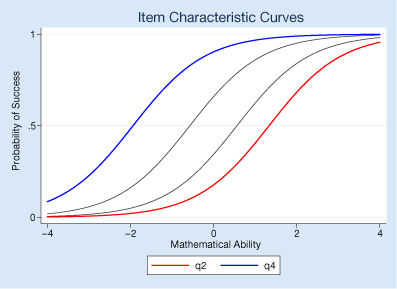
IRT (item response theory)IRT stands for "item response theory". IRT models explore the relationship between a latent (unobserved) trait and items that measure aspects of the trait ... |
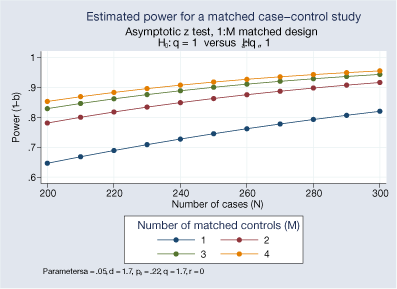
Power analysis for contingency tables and survivalWith Stata's power command, you can compute power, sample size, and effect size. Enter any two and get the third. Enter lists of values and get tabular results or graphs automatically. Now this power is extended to contingency table analysis and survival methods.... |
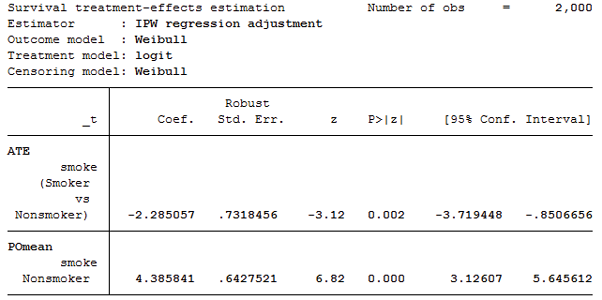
Treatment effects for survival modelsWant to estimate average treatment effects (ATEs) and ATEs on the treated when your outcome of interest is a survival time or duration? Want to do all of this in a potential-outcomes framework that let's you estimate mean outcomes for the treated and untreated? Stata's treatment-effects estimators now support parametric survival-time models ... |
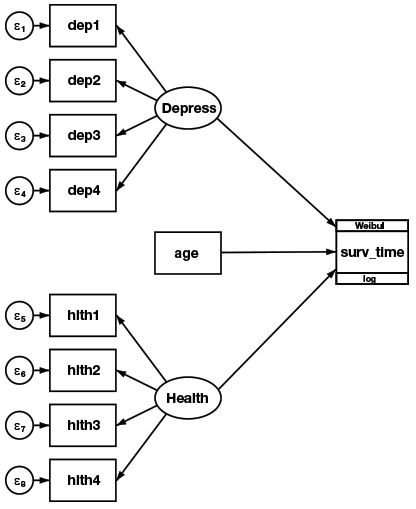
New in SEM (structural equation modeling)SEM has many new features in Stata 14. You can now include survival outcomes, meaning survival models can leverage the full SEM framework. They can include latent variables, be combined with measurement models, be combined with repeated-measures models, and more. Not enough? SEM now supports survey data for binary, count, and ordered outcomes. Not enough? Satorra–Bentler adjustments for nonnormality are new too.... |
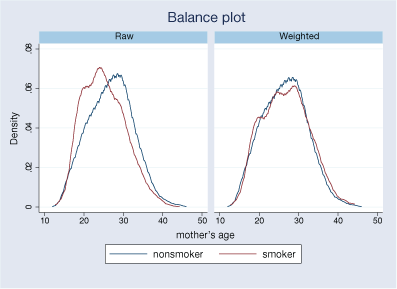
Balance diagnostics for treatment effectsTreatment effects extract experiment-style causal effects from observational data. A key requirement is that our treatment-effects model explicitly or implicitly reweights the data such that the model-adjusted distribution of the covariates is comparable across treatment groups. Balance diagnostics check this ... |
Denominator degrees of freedom for mixed-effects modelsStata fits linear mixed-effects models and, until now, provided only large-sample inference based on normal and χ2 distributions. Stata 14 provides five methods for small-sample inference, including Satterthwaite and Kenward–Roger. |
Margins gets even better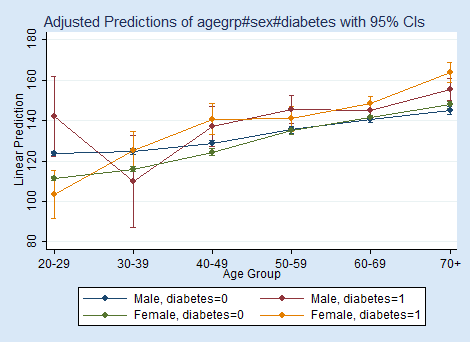
One of Stata's neatest commands, margins, is difficult to explain. With margins, you can do what-if analyses. What would have been observed if everyone in the data was male? Female? What would have happened if the men in the data had their same characteristics but were relabeled women, and the women had their same characteristics but were relabeled men? |
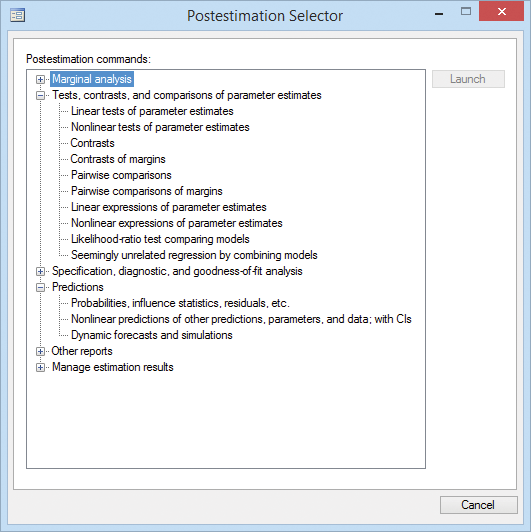
Find your postestimationBring up this little window, and, as you fit models, Stata will show the postestimation statistics, tests, and predictions that you could use right now ... |
And more new featuresThere's much more, and perhaps your favorite is here: We've also added more than 2 billion observations allowed • tests for structural breaks in time series • hurdle model estimation • censored Poisson regression • sampling weights allowed with treatment effects • integrate better with Excel® • Stata's interface can now be in Spanish or Japanese • ICD-10 diagnosis codes • the 64-bit Mersenne Twister for pseudorandom numbers • Quick Starts in the manuals • and fractional regression. |
Stata ConferenceJoin us in Columbus! This year's conference includes in addition to user contributions, presentations by StataCorp developers on new Stata 14 features. |







